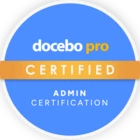Dear community,
Thanks to Docebo, we have been able to successfully create a learning environment which has been well accepted by our colleagues over the past 2 years.
Now the time has come to make our course and webinar knowledge base - or at least part of it - available to our customers as well. This requires, of course, a number of considerations and preparations. We intend to create a specific landing page for our external users, and in particular, we have to make sure that they will have access only to those courses and webinars which the company allows to make public. Well, you might say that this is just a filtering task. I agree. But is it really that simple? Which platform functionalities should you use to manage the visibility of courses and webinars to the specific user groups?
Instead of reinventing the wheel (and to avoid to get a square one), I’d prefer to first contact this community because I am sure that some of you have been in a similar situation.
So I’d be more than happy to learn how you are managing this. Thanks so much for sharing your experience.





